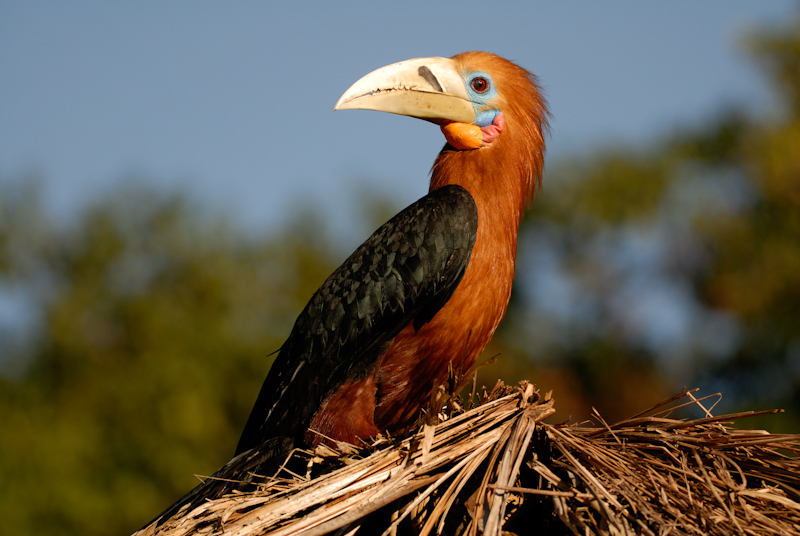Distinguishing features
The head, neck, and lower body of the male are coloured rufous, with deeper colouration on the flanks and abdomen. The middle primaries and the lower half of the tail are tipped white. The rest of the hornbill's plumage is a glossy dark-green and black. The lower tail-covert feathers are coloured chestnut mixed with black.
The female, on the other hand, is black, except for the end-portion of her tail and the tips of the middle primaries, which are white.
Juvenile hornbills resemble adults of the same sex, but lack the ridges at the base of the upper beak.
The beak lacks a true caique but is thickened at its base. It has a number of dark ridges on the upper beak which are absent in the young and increase in number with age up to about seven. The commissure of the beaks is broken for both sexes. (Wikipedia)
Size
- Up to 117 cm (Length of specimen)
Wingspan
- Wingspan data is not yet available.
Synonyms
Distribution
Distribution and habitat preferences
Of all hornbills, this species has the northern-most extent, formerly ranging across the mountains from Nepal to Vietnam, but which is now restricted to north-eastern India, Bhutan, Burma, south-eastern Tibet, northern and western Thailand, northern Laos and northern Vietnam.
While predominantly a bird of ridged and hilly (chiefly broadleaved) forests, forests at altitudes of 150–2,200 metres, it has also been recorded in dry woodland. (Wikipedia)


